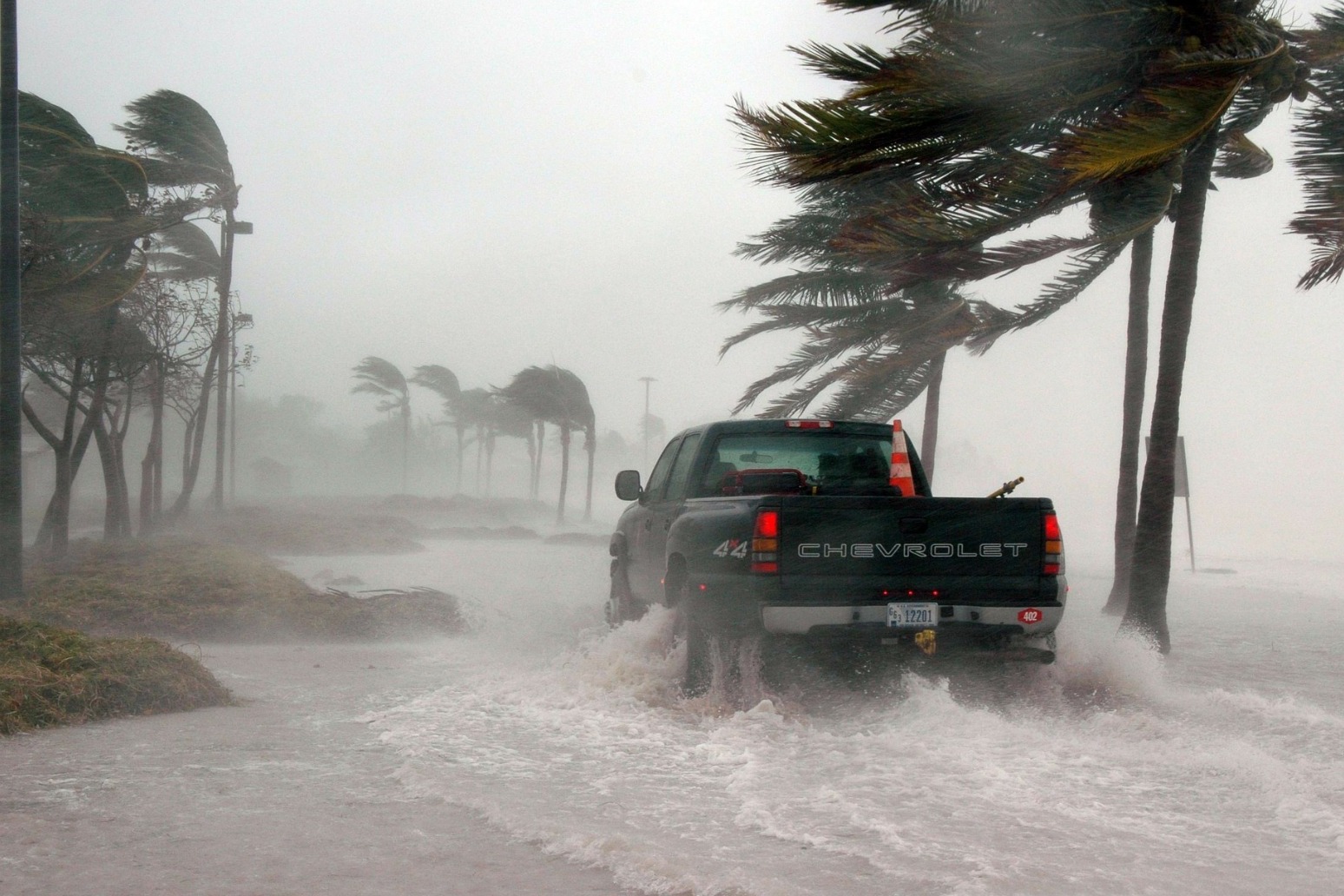
Hurricane Michael plows inland, leaving devastation behind
The third-most powerful storm ever to strike the U.S. mainland headed northeast to soak Georgia and the Carolinas on Thursday, leaving the Florida Panhandle to assess the devastation left by Hurricane Michael.
A man was killed when a tree toppled onto his house in Florida and a girl died when debris fell into a home in Georgia, local media reported and officials said.
The Category 4 storm was the fiercest hurricane to hit Florida in 80 years when it came ashore as a on Wednesday, but its strength waned as it pushed into Georgia. Early on Thursday, it was downgraded to a tropical storm, with top sustained winds diminishing to 60 miles per hour.
More than 700,000 homes and businesses were without power in Florida, Alabama and Georgia early on Thursday. Thousands hunkered down in shelters overnight after fleeing their homes to escape the fast-approaching storm.
Michael, whose rapid intensification as it churned north over the Gulf of Mexico caught many by surprise, made landfall on Wednesday afternoon near Mexico Beach, about 20 miles (32 km) southeast of Panama City in Florida's panhandle. Top sustained winds reached 155 miles per hour.
The governors of North and South Carolina urged residents to brace for heavy rain and storm-force winds as Michael plowed northward up the Atlantic seaboard. The Carolinas are still recovering from the flooding that followed Hurricane Florence less than a month ago.
The National Hurricane Center said Michael would pass through the Carolinas on Thursday, dumping as much as 8 inches of rain in some areas. Up to a foot (30 cm) of rain was forecast in Florida.
Television news footage during the day showed homes submerged in floodwaters up to their roofs in Mexico Beach. The fate of about 280 residents who authorities said ignored evacuation orders was unknown.
Numerous buildings in Panama City were demolished or left without roofs amid deserted streets littered with debris, twisted, fallen tree trunks and dangling wires.
Bill Manning, a 63-year-old grocery clerk, fled his camper van in Panama City for safer quarters in a hotel only to see the electricity there go out.
"My God, it’s scary. I didn’t expect all this," he said.
'ALMOST IMPOSSIBLE'
Twenty miles south of Mexico Beach, floodwaters were more than seven feet deep near Apalachicola, a town of about 2,300 residents, hurricane center chief Ken Graham said. Wind damage was also evident.
"There are so many downed power lines and trees that it's almost impossible to get through the city," Apalachicola Mayor Van Johnson said.
Some 500,000 Florida residents were ordered or urged to seek higher ground before the storm in 20 counties spanning a 200-mile stretch of shoreline, the Federal Emergency Management Agency (FEMA) said.
But Brad Kieserman of the American Red Cross said on Wednesday as many as 320,000 people on Florida's Gulf Coast had disregarded evacuation notices.
An estimated 6,000 evacuees took cover in emergency shelters, most of them in Florida, and that number was expected to swell to 20,000 across five states by week's end, Kieserman said.
Bo Patterson, the mayor of Port St. Joe, just south of Mexico Beach, rode out the storm in his house seven blocks from the beach, describing the scene outside as "very, very scary."
He was one of about 2,500 of the town's 3,500 residents who stayed put. Many were caught off guard by the storm's rapid escalation as it approached. "This happened so quickly," he said.
FEMA head Brock Long acknowledged that evacuation efforts in the area were slow compared with how fast the hurricane intensified. Michael grew from a tropical storm into a Category 4 hurricane in about 40 hours.
With a low barometric pressure recorded at 919 millibars, the measure of a hurricane's force, Michael ranked as the third-strongest storm on record to make landfall in the continental United States. Only Hurricane Camille on the Mississippi Gulf Coast in 1969 and the so-called Labor Day hurricane of 1935 in the Florida Keys were more intense .
President Donald Trump declared a state of emergency for all of Florida, freeing federal assistance to supplement state and local disaster responses.
About 3,500 Florida National Guard troops were deployed to help with evacuations and storm recovery, along with more than 1,000 search-and-rescue personnel, Governor Rick Scott said.
The Pentagon said it had positioned more than 2,200 active-duty military personnel, along with helicopters, high-water vehicles and swift-water boats for deployment as needed.
Even before landfall, the hurricane disrupted energy operations in the Gulf, cutting crude oil production by more than 40 percent and natural gas output by nearly a third as offshore platforms were evacuated before the storm hit .
Published: by Radio NewsHub